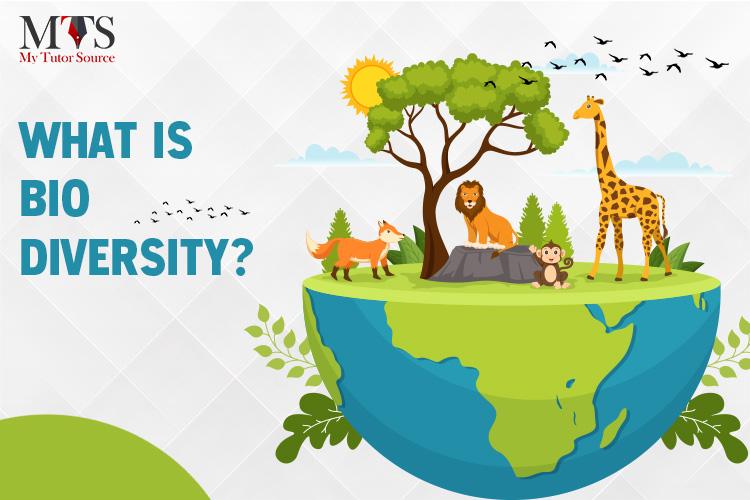Table of Contents
- Understanding the Interconnectedness of Environmental and Planetary Health
- The Role of Biodiversity in Sustaining Ecosystems and Human Well-being
- Mitigating Climate Change: Strategies for a Healthier Planet
- Promoting Sustainable Practices for Future Generations
- Engaging Communities in Environmental Stewardship and Resilience
- Q&A
- Future Outlook

Understanding the Interconnectedness of Environmental and Planetary Health
The intricate balance between our environment and the overall health of our planet is often overlooked in discussions centered around sustainability. Every ecosystem, from dense forests to urban landscapes, interacts with the atmosphere, the water systems, and the geological structures beneath us. This interconnected nature means that disturbances in one area can cause ripple effects across the entire planet. For example, deforestation not only reduces biodiversity but also affects carbon sequestration, which in turn alters climate patterns. Recognizing this web of interdependence is crucial for creating effective strategies aimed at promoting sustainability.
Human activities have dramatically reshaped our planet’s ecosystems. Industrialization, urban sprawl, and unsustainable agricultural practices have led to pollution, habitat destruction, and climate change. This degradation of environmental health is closely linked to human health outcomes, illustrating the concept of One Health. Key factors contributing to this include:
- Air quality: Poor air quality can lead to respiratory diseases.
- Water safety: Contaminated water sources directly impact public health.
- Food security: Unsustainable farming practices compromise nutrient availability.
Efforts to combat these issues require a holistic approach, integrating ecological understanding with human social systems. Policies aimed at enhancing planetary health must consider the relationship between environmental stewardship and community resilience. For instance, investing in renewable energy not only mitigates climate change but also fosters job creation and improves public health by reducing pollution. A coordinated response that promotes education, technology, and sustainable practices can facilitate a lasting transformation and ensure a healthier planet for future generations.

The Role of Biodiversity in Sustaining Ecosystems and Human Well-being
Biodiversity plays a vital role in enhancing the resilience and functionality of ecosystems, which, in turn, support human activities and well-being. An array of species contributes not only to the balance of ecological systems but also to the provision of essential services. These services include:
- Pollination: Crucial for the reproduction of many crops and wild plants, impacting food production.
- Water Purification: Healthy ecosystems filter pollutants, ensuring access to clean water.
- Soil Fertility: Diverse microbial communities enhance nutrient cycling, supporting agricultural productivity.
The interdependence of species creates a network of relationships that underpins ecosystem stability. When biodiversity is compromised, ecosystems become vulnerable to disruptions such as climate change or invasive species. This vulnerability not only threatens wildlife populations but also jeopardizes the resources humans rely on for survival. For example, the decline of fish stocks due to overfishing and habitat loss directly affects global food security and livelihoods. Maintaining biodiversity is therefore not just an environmental concern but a pressing necessity for human health and sustainability.
Furthermore, biodiversity fosters resilience in the face of environmental changes. Diverse ecosystems are better equipped to adapt and recover from disturbances, such as natural disasters or climate events. This resilience can be observed in various biomes, from forests to wetlands. The inclusion of various species often leads to greater ecosystem productivity and stability. To illustrate this, consider the following table of ecosystem services and their benefits:
| Service | Benefit |
|---|---|
| Carbon Sequestration | Mitigates climate change by absorbing CO2 from the atmosphere. |
| Disease Regulation | Preventing outbreaks through natural predation and balance. |
| Cultural Services | Enhances mental health and biodiversity appreciation through nature-based activities. |

Mitigating Climate Change: Strategies for a Healthier Planet
One of the most effective approaches to reduce our carbon footprint and drive impactful change involves adopting sustainable practices in our daily lives and industries. Implementing renewable energy sources like solar, wind, and hydro can significantly decrease reliance on fossil fuels. Furthermore, promoting energy efficiency in homes and businesses not only helps save costs but also conserves resources. Here are some strategies to consider:
- Switching to energy-efficient appliances to reduce electricity consumption.
- Utilizing public transportation or carpooling to decrease greenhouse gas emissions.
- Incorporating smart technology to monitor and optimize energy usage.
Another vital strategy is the enhancement of sustainable agricultural practices to mitigate the effects of climate change on food security. Regenerative farming techniques, like crop rotation, permaculture, and organic farming, can restore soil health and enhance biodiversity. Some initiatives also focus on reducing the carbon output from livestock farming, which contributes significantly to global emissions. The following table illustrates the impact of different agricultural methods on sustainability:
| Farming Method | Carbon Footprint (CO2e/ton) | Biodiversity Impact |
|---|---|---|
| Conventional Farming | 500 | Low |
| Organic Farming | 300 | Medium |
| Regenerative Farming | 100 | High |
Additionally, advocating for policy changes at local, national, and international levels plays a crucial role in climate action. Engaging in public discourse, supporting climate-friendly legislation, and collaborating with NGOs can allow individuals to influence decision-makers. Grassroots movements advocating for green policies can catalyze transformational changes in how societies operate. Essential actions include:
- Promoting awareness around climate issues to foster community action.
- Supporting green businesses that prioritize eco-friendly practices.
- Participating in local climate initiatives to reinforce collective growth.
Promoting Sustainable Practices for Future Generations
As we navigate the challenges posed by rapid urbanization and climate change, promoting sustainable practices becomes vital for ensuring a healthier planet. By embracing eco-friendly habits, we create a lasting impact that nurtures both the environment and society. Here are some effective strategies:
- Reduce single-use plastics: Opt for reusable items such as bags, bottles, and containers to minimize plastic waste.
- Incorporate renewable energy: Transitioning to solar or wind energy not only cuts down on carbon emissions but also supports a green economy.
- Support sustainable agriculture: Purchase locally-sourced and organic products to reduce carbon footprints and promote biodiversity.
Engaging future generations in sustainability requires education and innovation. Integrating environmental science into school curricula allows students to grasp the importance of protecting ecosystems. Additionally, fostering creativity in finding solutions can inspire younger minds to become advocates for the planet. Consider these approaches:
- Hands-on projects: Encourage students to participate in community gardens or clean-up events to understand ecological balance.
- Use of technology: Introduce kids to apps that track carbon footprints or gamify recycling efforts, making sustainability fun.
Collaboration among individuals, communities, and businesses is crucial for promoting sustainable practices. By forming collective efforts, we can amplify our impact and drive meaningful change. Organizations can:
- Host workshops: Offer training on sustainable living practices to empower the local community.
- Create partnerships: Work with governments and NGOs to implement green initiatives that benefit all stakeholders.

Engaging Communities in Environmental Stewardship and Resilience
Building a sustainable future requires a collaborative effort, and local communities play a crucial role in driving environmental stewardship. Engaging residents in meaningful ways not only fosters a sense of ownership but also strengthens connections to the natural world. Here are several approaches to mobilize community involvement:
- Educational Workshops: Hosting workshops that focus on sustainability practices, such as composting or organic gardening, can empower individuals with knowledge and actionable skills.
- Community Clean-Up Events: Organizing regular clean-up initiatives in parks, rivers, and streets not only beautifies the environment but also inspires residents to take proactive steps in preserving their surroundings.
- Local Environmental Monitoring: Involving residents in monitoring local ecosystems—through citizen science projects, for example—can lead to increased awareness and protect biodiversity.
Implementing community-led environmental initiatives fosters resilience against climate change impacts. By encouraging local solutions, communities can adapt to environmental challenges through a decentralized approach. Some effective strategies include:
| Strategy | Description |
|---|---|
| Urban Greening Projects | Enhancing green spaces in urban areas improves air quality and lowers city temperatures. |
| Local Food Systems | Promoting farmers’ markets strengthens food security and reduces carbon footprints. |
| Community Resilience Hubs | Creating spaces that provide resources and support during climate-related emergencies. |
Encouraging a culture of stewardship can lead to long-term societal change. By recognizing the interconnectedness of community actions and environmental health, individuals can feel motivated to participate in sustainability efforts. This solidarity can manifest in various forms:
- Volunteer Programs: Establishing programs that allow community members to assist in environmental projects cultivates teamwork and reinforces commitment.
- Collaborative Partnerships: Forming alliances with local businesses, schools, and organizations can amplify resources and impact.
- Public Art Initiatives: Creative expressions, such as murals or sculptures, raise awareness of environmental issues and celebrate local nature.
Q&A
Q&A: Understanding Planetary Health and Its ImportanceQ1: What is planetary health? A: Planetary health is an interdisciplinary framework that recognizes the interconnectedness of human health and the health of our planet. It emphasizes that the deterioration of our environmental systems, such as climate change, biodiversity loss, and ecosystem degradation, directly impacts human health outcomes. By focusing on the health of our planet, we can ensure the well-being of current and future generations.Q2: Why is planetary health crucial for global well-being? A: The health of our planet serves as the foundation for all life. Polluted air, contaminated water, and declining biodiversity lead to increased diseases, food insecurity, and mental health issues among populations. Addressing planetary health means tackling these environmental challenges, which in turn can improve health outcomes, enhance quality of life, and strengthen community resilience.
Q3: What are some key factors affecting planetary health today? A: Several critical factors threaten planetary health, including climate change, pollution, deforestation, and habitat loss. Industrial activities, urbanization, and overconsumption have accelerated these issues, resulting in rising temperatures, extreme weather events, and the depletion of natural resources. Each of these factors can have cascading effects on ecosystems and human health.
Q4: How does climate change correlate with human health? A: Climate change exacerbates a range of health risks. For instance, higher temperatures can lead to heat-related illnesses and increased respiratory problems from air pollution. Extreme weather events can lead to injuries, loss of housing, and displacement. Furthermore, shifts in climate can affect food production and the spread of infectious diseases, making communities more vulnerable.
Q5: What role do individuals play in promoting planetary health? A: Individuals can make a significant impact by changing their daily habits and advocating for sustainable practices. Simple actions like reducing waste, conserving water, using public transport, supporting local agriculture, and raising awareness about environmental issues contribute to a healthier planet. Collective individual actions can drive systemic change and influence policy decisions.
Q6: How can governments and organizations support planetary health? A: Governments and organizations can create policies that prioritize environmental sustainability and public health. This includes investing in renewable energy, protecting natural habitats, promoting sustainable agriculture, and enhancing public transportation systems. Collaborative efforts at local, national, and global levels are essential to address planetary health challenges effectively.
Q7: What are some promising initiatives focused on improving planetary health? A: Various initiatives are underway globally to enhance planetary health, including the United Nations Sustainable Development Goals (SDGs), initiatives like the Paris Agreement to combat climate change, and local community projects that promote green spaces and biodiversity. These initiatives aim to foster a holistic approach to health by ensuring that environmental integrity is maintained alongside human well-being.
Q8: How can education play a role in advancing planetary health? A: Education is crucial in raising awareness about the relationship between environmental health and human well-being. By incorporating planetary health concepts into school curriculums and community programs, we can empower individuals to make informed decisions and encourage future generations to prioritize sustainability. Education fuels change by cultivating informed citizens who can advocate for healthier practices and policies.
By addressing these questions, we can better understand the essential concept of planetary health and the integral role we all play in safeguarding our planet for future generations.



0 Comments